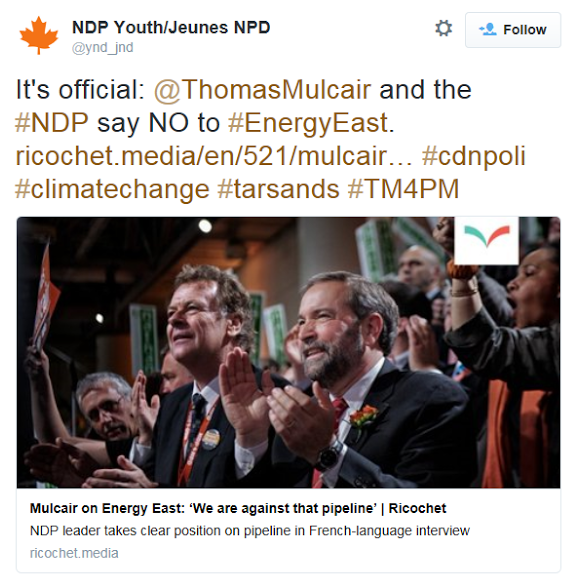The NDP is losing momentum at the hands of all three of its rivals in Quebec ahead of the first French-language debate that will test the partys ability to sustain the 2011 Orange Wave, a new Léger poll has found.
According to the poll, provided to The Globe and Mail, the NDP has the support of 38 per cent of voters in Quebec, down eight points over three weeks. Meanwhile, the Liberals are up two points to 22 per cent, the Bloc is up two points to 20 per cent and the Conservatives are up five points to 18 per cent.
The New Democrats started the campaign as front-runners in Quebec, making them the target of attacks from all sides of the political spectrum. The pummelling is expected to continue during debates this Thursday and Friday of next week, which will be broadcast on major French-language television networks.
The Bloc Québécois is going after the NDPs nationalist vote in rural regions of the province, while the Liberal Party is challenging NDP Leader Thomas Mulcairs status as the best agent of change in the Montreal area. Meanwhile, the Conservatives are targeting the NDP in central and eastern Quebec, using the issue of the niqab as a wedge to shake the partys support among francophone voters.
The NDP had the wind in their sails, but now they are facing headwinds, pollster Jean-Marc Léger said in an interview. The partys support is being carved up by the [other] three parties, which each have their strengths in different parts of the province.
The NDP seems to be struggling to keep together the coalition of voters that led to the partys historic victory in Quebec in 2011, Mr. Léger added.
The Léger numbers have an impact on the national race, leaving the NDP in third place at 29 per cent across the country, behind the Liberals and the Conservatives who are tied at 31 per cent in the Léger poll.
The results are similar to The Globe and Mail/ CTV/Nanos nightly tracking poll, which found a three-way national race between the Liberals at 31.6 per cent, the Conservatives at 31.5 per cent and the NDP at 29.1 per cent.
Outside of Quebec, Mr. Léger said its a two-way race between the Conservative Party (35 per cent) and the Liberal Party (34 per cent), with the NDP trailing at 25 per cent.
A key number in the Léger poll is that Justin Trudeaus Liberal Party is described as the party that most embodies change by 28 per cent of respondents (up seven points), ahead of Mr. Mulcair and the NDP at 26 per cent (down 6 points).
The poll found the NDP benefited from issues that dominated the early days of the campaign, such as the criminal trial of Senator Mike Duffy. However, the Liberals have won voter support with its economic plan, including a promise to nearly double infrastructure spending and go into deficit to spur economic growth that was made in late August.
Justin Trudeau has managed to embody change in this campaign, a lot more than the NDP, especially in relation to the issue of the deficit. In my view, this is where things started to change, Mr. Léger said.
He added that the Conservatives benefited from the recent announcement that the federal government racked up a $1.9-billion surplus in the past fiscal year.
In Quebec, the poll found that both the Bloc and the Conservative Party have gained support with their proposal to force women to remove their niqabs at citizenship ceremonies. For the Conservatives, their support has grown mainly in central and eastern Quebec, in cities such as Trois-Rivières, Victoriaville and Quebec City.
Mr. Mulcair was forced to defend his position on the niqab on Wednesday, stating he would not force women to remove their niqabs during the public portion of citizenship ceremonies.
If some of these women are being oppressed, we have to reach out to them, and its not by depriving them of their Canadian citizenship and their rights that we can help them, Mr. Mulcair said in Montreal.
The Léger online poll is deemed to be accurate within 2.1 percentage points, 19 times out of 20. Léger polled 1,023 of its 2,115 respondents in Quebec to obtain a clearer picture of the province, but weighted the responses based on the provinces share of the Canadian population for its national numbers.


